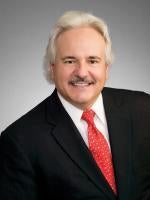On May 26, 2015, the Supreme Court decided Commil USA, Inc. v. Cisco Systems, Inc., 575 U.S. ____, (2015), holding that a good-faith belief that a patent is invalid is not a defense to inducing infringement liability under 35 U.S.C. § 271(b) ("[w]hoever actively induces infringement of a patent shall be liable as an infringer."). The Supreme Court reversed the Federal Circuit’s decision holding that "evidence of an accused inducer’s good-faith belief of invalidity may negate the requisite intent for induced infringement." Commil USA, Inc. v. Cisco Systems, Inc., 720 F.3d 1361, 1368-69 (Fed. Cir. 2013).
To prove a claim of induced patent infringement, patent owners already must establish that there is: (1) a direct infringement of the patent; (2) the party accused of inducement knowingly engaged in acts that induced the infringement by the direct infringer; (3) the party accused of inducement knew of the patent at issue; and (4) the party accused of inducement acted with intent to cause a patent infringement. See In re Bill of Lading Transmission & Processing Sys. Patent Litig., 681 F.3d 1323, 1339 (Fed. Cir. 2012); see also Global-Tech Appliances, Inc. v. SEE S.A., 131 S. Ct. 2060, 2068 (2011); DSU Med. Corp. v. JMS Co., 471 F.3d 1293, 1306 (Fed. Cir. 2006).
As the Supreme Court held in Global-Tech, and reaffirmed in Commil, liability "for induced infringement can only attach if the defendant knew of the patent and knew as well that 'the induced acts constitute patent infringement.'" 575 U.S., slip opn. at 6. Knowledge and intention of the accused infringer are thus already built into the burden of a patent holder’s proof. The outcome of the Commil case was quite significant to patent owners, for the Federal Circuit’s rule would have allowed an accused infringer to defeat induced infringement claims based on the accused infringer’s good-faith-but-incorrect-belief of invalidity of the patent, even though the accused infringer knew of the patent and knew that the acts it was inducing constituted infringement. The Supreme Court, however, found that "[t]he scienter element for induced infringement concerns infringement; that is a different issue than validity. . . . And because infringement and validity are separate issues under the Act, belief regarding validity cannot negate the scienter required under §271(b)." 575 U.S., slip opn. at 9.
In 2007, Commil USA, Inc. ("Commil") brought suit in the Eastern District of Texas against Cisco Systems, Inc. ("Cisco") regarding infringement of Commil’s patent relating to an improved way to implement a short-range wireless network such as a WiFi network. As a defense against induced infringement, Cisco argued that it had a good-faith belief that Commil’s patent was invalid. The District Court rejected this defense, ruling that evidence proferred in support of it was inadmissible. The jury ultimately found against Cisco for induced infringement with an award of over sixty million dollars in damages to Commil. Cisco appealed to the Federal Circuit, which found that the District Court erred in ruling that evidence proferred to show a defense of good-faith belief in invalidity was inadmissible. The Supreme Court granted certiorari to decide the question of whether knowledge of, or belief in, a patent’s validity is required for induced infringement under §271(b).
In the past, the Federal Circuit recognized "that patent infringement and invalidity are separate and distinct issues. Though an invalid claim cannot give rise to liability for infringement, whether it is infringed is an entirely separate question capable of determination without regard to its validity." Pandrol USA, LP v. Airboss Railway Prods., Inc., 320 F.3d 1354, 1365 (Fed. Cir. 2003) (internal citation omitted). The Supreme Court confirmed that "[w]hen infringement is the issue, the validity of the patent is not the question to be confronted." 575 U.S., slip opn. at 9. This is reflected in the structure of U.S. patent law itself in which "the issues of infringement and validity appear in separate parts of the Patent Act . . . [and] noninfringement and invalidity are listed as two separate defenses." Id. at 10. Therefore, interpreting "§271(b) as permitting a defense of belief in invalidity… conflate[s] the issues of infringement and validity." Id.
As the Supreme Court also observed, a defense of belief in invalidity "would also undermine a presumption that is a 'common core of thought and truth' [of U.S. patent law] . . . [that] a patent is 'presumed valid.'" Id.; see, e.g., 35 U.S.C. § 282(a) ("A patent shall be presumed valid. . . . The burden of establishing invalidity of a patent or any claim thereof shall rest on the party asserting such invalidity."). The Supreme Court commented that "if belief in invalidity were a defense to induced infringement, the force of that presumption [of validity] would be lessened to a drastic degree, for a defendant could prevail if he proved he reasonably believed that patent was invalid." Id. Though the patent is presumed valid, accused infringers can challenge that presumption by raising and proving invalidity as an affirmative defense, which, if successful, removes liability for infringement of the patent claims at issue. However, as the Supreme Court clarified, "invalidity is not a defense to infringement, it is a defense to liability. And because of that fact, a belief as to invalidity cannot negate the scienter required for induced infringement." Id. at 11.
The dissent and others advocated creating a defense to inducing infringement liability as a method for combatting frivolous patent litigation. But the supposed cure would have done violence to the traditional distinction between infringement and validity in U.S. patent law and the presumption of validity for all U.S. patents. As the Supreme Court pointed out, accused infringers who believe a patent is invalid have a number of ways to obtain a judgment of invalidity, such as filing a declaratory judgment action, or seeking inter partes review or ex parte re-examination of the patent in suit at the U.S.P.T.O. Id. at 12. On the other hand, enabling a defense of belief in invalidity would create an incentive for any accused infringer to assert such a defense on the basis of any remotely plausible theory of invalidity. This would inevitably increase discovery costs and multiply the issues that a jury must resolve in a patent litigation. Id. The Supreme Court also stressed that district courts retain the authority to ensure frivolous cases are dissuaded by awarding attorney’s fees to prevailing parties in exceptional cases. Id. at 14; see Octane Fitness, LLC v. ICON Health & Fitness, Inc., 572 U.S. ___, (2014).





 i
i

